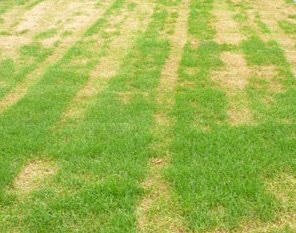
Asochyta Leaf Blight



Ultralawn Incorporated
1055 East 260th Street
Euclid, OH 44132
216.731.7756
440.951.3738
Office hours Monday-Friday 9-3 call today with any questions

My Lawn Looks Like It’s Dying! Ascochyta leaf blight of turf grasses
is caused by more than 80 different fungi which can cause damage
to Kentucky bluegrass, creeping bentgrass, Perennial ryegrasses, and
fescues. The Ascochyta fungi attack grasses during much of the
growing season when humidity is high or when irrigations and
mowing are frequent. The Ascochyta fungi seldom cause extensive
damage. The grass blade is usually killed from the tip down towards
the base of the plant. Infection occurs through the cut end of the leaf
blade. You can often see small, black dots on the dead tissue just
adjacent to the living tissue.
When Does It Usually Occur? This disease is common when a cool,
wet spring is followed immediately by hot summer conditions.
Ascochyta leaf blight is most severe when the turf becomes stressed
due to a combination of high heat and improper irrigation.
•
This disease does not usually kill the grass, but some turf thinning may occur under severe outbreaks.
•
Fungicides are ineffective in controlling this disease and are not recommended.
•
Moderating temperatures usually bring control of the disease.
•
Lawns maintained with frequent irrigation are prone to this disease when temperatures exceed 90
degrees F for consecutive days with no rainfall.
•
Recovery may take several weeks to a month for a severe outbreak, even with cooler temperatures, rain
and sufficient irrigation.
•
The disease rarely occurs in the fall and affected turf generally recovers completely during the fall
months.
Now That I Have It What Can I Do? Maintaining a vigorous lawn is the best prevention against Ascochyta leaf
blight. A core aeration in the spring or fall to reduce or prevent thatch build up will help. Be sure to keep your
mower blades sharp, never remove more that 1/3 of the blade at one cutting. Do not mow in the rain or when
the lawn is wet. Mow when the grass is dry to avoid spreading spores. Also, be sure to stay on a regular
fertilization program.

Asochyta spores transferred from a landscapers
mower wheels


















